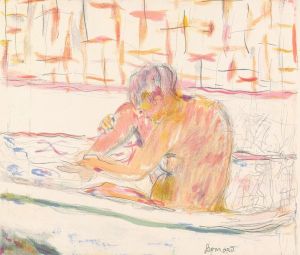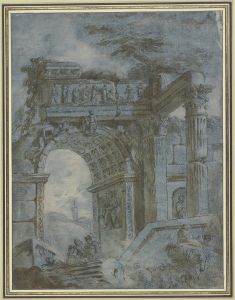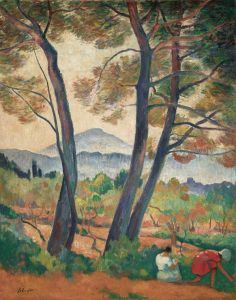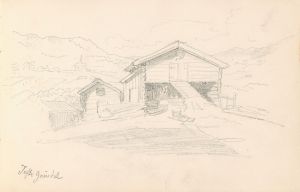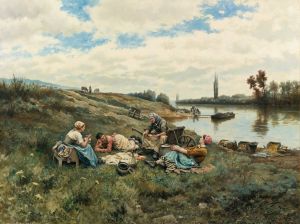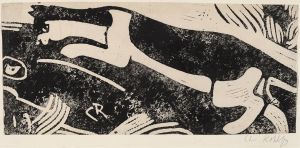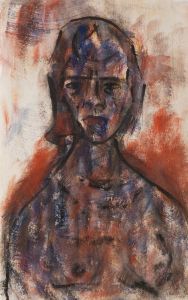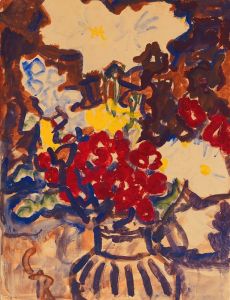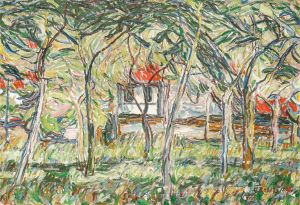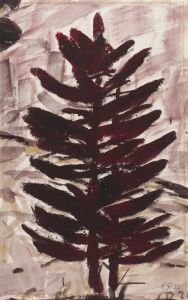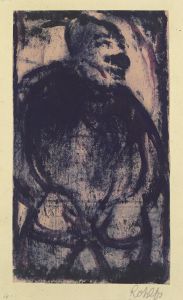
See im Abendlicht
A hand-painted replica of Christian Rohlfs’s masterpiece See im Abendlicht, meticulously crafted by professional artists to capture the true essence of the original. Each piece is created with museum-quality canvas and rare mineral pigments, carefully painted by experienced artists with delicate brushstrokes and rich, layered colors to perfectly recreate the texture of the original artwork. Unlike machine-printed reproductions, this hand-painted version brings the painting to life, infused with the artist’s emotions and skill in every stroke. Whether for personal collection or home decoration, it instantly elevates the artistic atmosphere of any space.
Christian Rohlfs (1849-1938) was a prominent German painter associated with the Expressionist movement. His work "See im Abendlicht" (Lake in the Evening Light) is a notable example of his mature style, which often featured landscapes imbued with emotional intensity and vibrant color palettes.
Rohlfs was born in Groß Niendorf, Germany, and showed an early interest in art. He studied at the Weimar Saxon-Grand Ducal Art School, where he was influenced by the academic traditions of the time. However, his style evolved significantly over the years, particularly after he encountered the works of the Impressionists and Post-Impressionists during his travels in Europe.
"See im Abendlicht" was created during a period when Rohlfs had fully embraced Expressionism. This movement, which emerged in the early 20th century, sought to convey emotional experiences rather than physical reality. Expressionist artists often used bold colors, distorted forms, and dynamic compositions to evoke moods and feelings.
In "See im Abendlicht," Rohlfs captures the tranquil yet evocative atmosphere of a lake at dusk. The painting is characterized by its use of rich, warm colors that suggest the fading light of the evening. The brushwork is expressive, with visible strokes that add texture and movement to the scene. The composition is balanced yet dynamic, drawing the viewer's eye across the surface of the water and towards the horizon.
Rohlfs' use of color in this painting is particularly noteworthy. He employs a palette of deep blues, purples, and oranges to create a sense of depth and luminosity. The interplay of these colors not only depicts the natural beauty of the scene but also conveys a sense of calm and introspection. This emotional resonance is a hallmark of Rohlfs' work and reflects his ability to merge the external world with his inner vision.
Throughout his career, Rohlfs was associated with several influential art movements and groups. He was a member of the Berlin Secession, an association of artists who rejected the conservative standards of the official art academies. Later, he became involved with the Brücke group, a collective of Expressionist artists who sought to break away from traditional artistic conventions.
Rohlfs' contributions to modern art were significant, and his work was widely exhibited during his lifetime. However, his career faced challenges during the rise of the Nazi regime in Germany. In 1937, his works were labeled as "degenerate art" by the Nazis, and many of his paintings were removed from museums and galleries. Despite this, Rohlfs continued to paint and remained committed to his artistic vision until his death in 1938.
"See im Abendlicht" remains an important example of Rohlfs' Expressionist period and is celebrated for its emotional depth and technical mastery. The painting is held in various collections and continues to be studied and admired by art historians and enthusiasts alike.
Christian Rohlfs' legacy as a pioneer of modern art endures, and his works, including "See im Abendlicht," continue to inspire and captivate audiences around the world.






